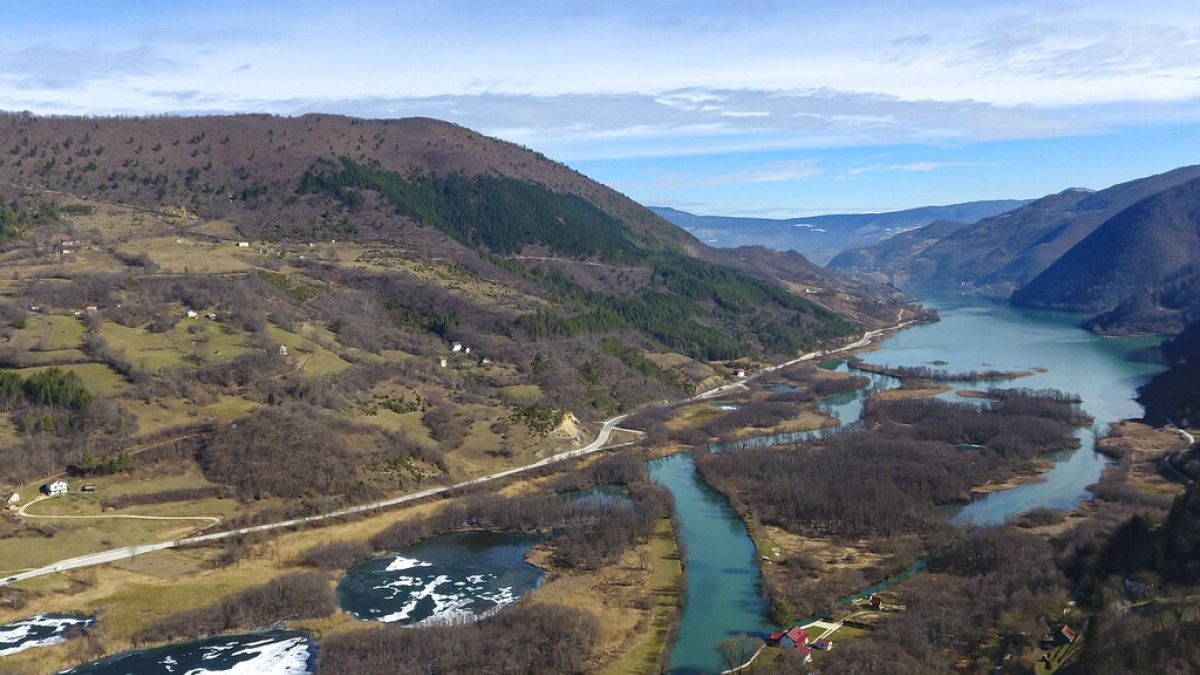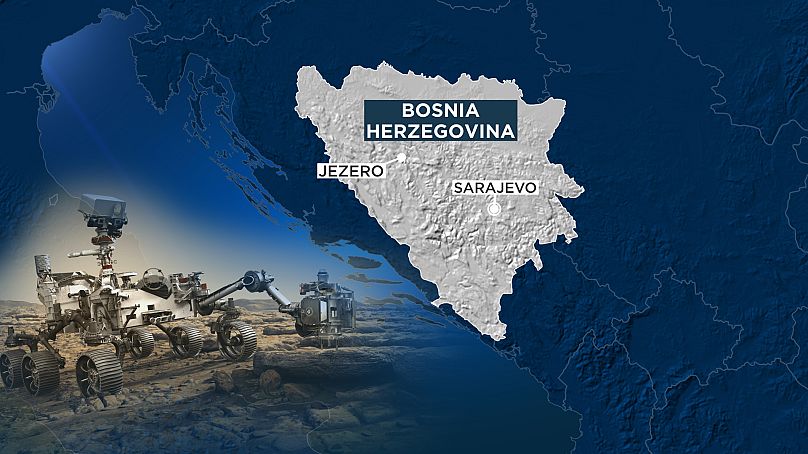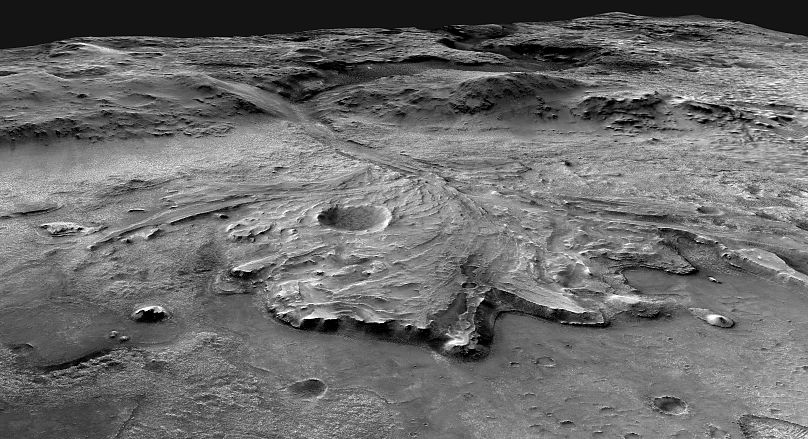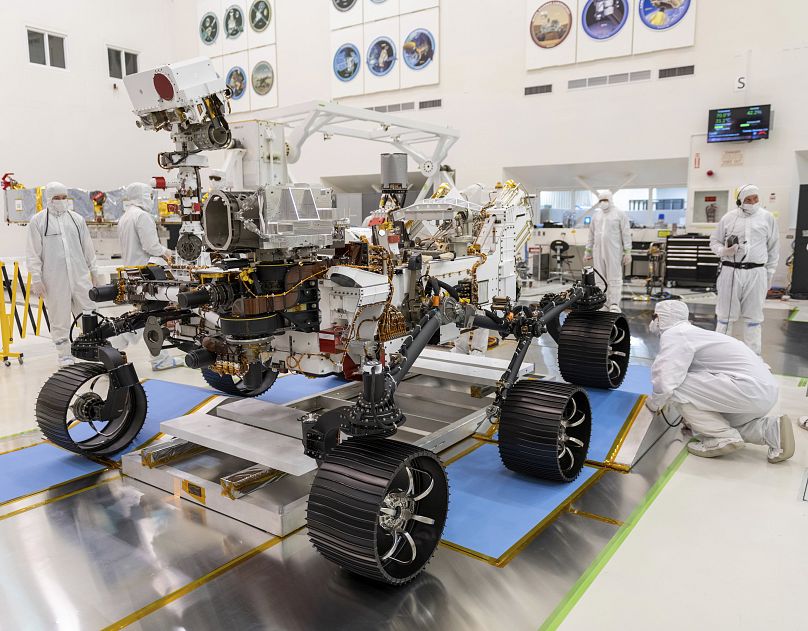Villagers in Bosnia will be glued to their screens on Thursday to see if NASA can land one of its rovers on Mars. Here's why.
It could be a historic day for the village of Jezero in Bosnia and Herzegovina.
Locals are hoping the planned landing of a NASA rover on Mars on Thursday will bring them some earthly rewards.
The village hopes the mission will bring more attention and visitors to their own their small patch of the universe, a verdant Bosnian valley adjacent to the beautiful, river-fed Pivsko Lake, around 120 kilometres north-west of Sarajevo.
The rover is hoping to touch down at Jezero Crater on the Red Planet, which was named after the village because it once also had a river-fed lake.
NASA told authorities in Jezero — which means lake in the local language — of their plans in September 2019.
The US ambassador to Bosnia delivered the news personally, presenting the mayor with a letter from the space agency's director of Mars exploration.
"It provoked different reactions," said Jezero mayor Snezana Ruzicic. "When I received a letter, I was amused, I thought it was fake news.
"Local residents reacted differently as well. Some thought it was superb and others ridiculed it, people were saying; 'Our mayor will take us to Mars.' Reactions on social networks were mixed, good and bad. But in the end, it made Jezero known."
The landing of NASA's Perseverance rover is the riskiest step yet in an epic quest to bring back rocks that could answer whether life ever existed on the red planet.
Ground controllers at the space agency's Jet Propulsion Laboratory in Pasadena, California, settled in nervously for the descent of Perseverance to the surface of Mars, long a deathtrap for incoming spacecraft.
It takes a nail-biting 11.5 1/2 minutes for a signal that would confirm success to reach Earth.
A new autopilot tool will calculate the descending rover's distance to the targeted location and release the massive parachute at the precise moment.
Then another system will scan the surface, comparing observations with onboard maps and guide it to a compact 8-by-6 kilometre patch on the edge of an ancient river delta.
Without these gizmos, the Jezero Crater would be too risky to attempt.
Once down, the six-wheeled Perseverance will drive across Jezero, collecting samples of rocks and gravel.
The bold plan then calls for a "fetch rover" to retrieve Perseverance's stash of samples in 2026 and for the geologic treasure to arrive on Earth in the early 2030s, several years before the first astronauts might arrive on the scene.
Scientists say it's the only way to find out if life flourished on a wet, watery Mars 3 to 4 billion years ago.
"Our journey has been from following the water to seeing whether this planet was habitable, to finding complex chemicals. And now we're at the advent of an entirely new phase, returning samples, an aspirational goal that has been with the science community for decades," says NASA's science mission chief, Thomas Zurbuchen.
Regardless of whether the mission to land at the Jezero Crater is successful, in Jezero, Bosnia, there is a whiff of celebration in the air.
"We are very happy that it has brought attention to us, to (our) Jezero," says villager Nedeljko Kovacevic.
After years of hardship and poverty that remains entrenched since the Bosnian war of the 1990s, some hope it can help them move on.
`"When I first heard on TV that NASA named a crater on Mars after Jezero, I was surprised and I thought: 'Something good is finally happening to us... maybe this is a sign we can finally move forward'." said Milan Kotanjac, another Jezero villager.
``"It is very important for our municipality, for our people,'' he added.
Ruzicic hopes the new fame will allow the area to develop projects, such as youth camps for children from across the still ethnically divided country, possibly even some devoted to space exploration.
The coronavirus pandemic forced Ruzicic to scale back plans for a series of lectures for local youths on Perseverance's mission.
However, they did manage to organise an event in the village last July for locals to watch a live feed of Perseverance's launch from NASA's Kennedy Space Center in Florida.
The children were invited to cover the village's main street with paintings of how they imagine Mars, and they happily obliged.
"I am sure that in the future it could inspire some good (local) projects, good events in the municipality of Jezero," she said.




